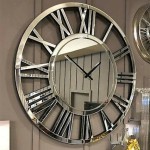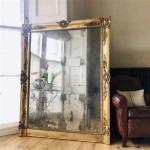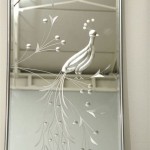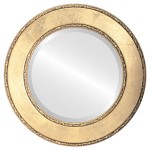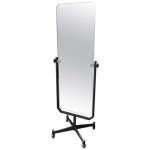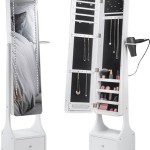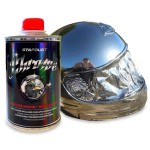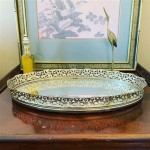How To Build A Mirror Frame With Lights
Adding a lighted mirror frame can significantly enhance the ambiance and functionality of any room. This project offers a customizable solution for bathrooms, vanity areas, or even living spaces. This guide provides a comprehensive walkthrough for constructing a mirror frame with integrated lighting.
Planning and Material Gathering: Begin by accurately measuring the mirror's dimensions. These measurements dictate the frame's size. Common frame materials include wood, metal, or PVC. Consider the overall aesthetic of the space when selecting the material. For lighting, LED strips offer energy efficiency and design flexibility. Choose a color temperature that complements the room's existing lighting scheme (warm white, cool white, etc.).
Required Materials: The specific materials will depend on the chosen design, but the following list covers common requirements:
- Mirror
- Frame material (wood, metal, PVC)
- LED strip lights
- Power supply for LED lights
- Measuring tape
- Saw (appropriate for the frame material)
- Safety glasses
- Wood glue (if using wood)
- Screws
- Drill
- Wiring
- Wire connectors
- Sandpaper
- Paint or stain (optional)
Frame Construction: Cut the chosen frame material according to the mirror's dimensions, adding extra length for mitered corners if desired. A 45-degree angle cut on each end of the frame pieces allows for a seamless corner joint. Ensure precise measurements and cuts for a professional finish. For wooden frames, wood glue can reinforce the joints. Secure the pieces together using screws, countersinking them for a flush surface. Sand any rough edges smooth.
Integrating the Lighting: Before attaching the mirror to the frame, adhere the LED strips to the inner edge of the frame, facing inwards towards the mirror. Ensure the LED strip connectors are accessible for wiring. Consider diffusing the LED light with a frosted acrylic or plastic sheet placed within the frame to create a softer, more even glow. This also helps protect the LEDs from dust and moisture.
Wiring: Following the manufacturer's instructions, connect the LED strips to the power supply. Ensure all connections are secure and properly insulated. If necessary, drill a small hole in the back of the frame to run the power cord through. Consider adding a switch for convenient on/off control. Exercise caution when working with electrical components. Consulting a qualified electrician is recommended if there are any uncertainties regarding electrical wiring.
Mounting the Mirror: Once the wiring is complete, carefully place the mirror within the frame. Secure it using mirror clips, adhesive, or a combination of both. Ensure the mirror is centered and level within the frame. Avoid applying excessive pressure that could crack the mirror.
Finishing Touches: Depending on the chosen frame material and desired aesthetic, apply paint, stain, or a sealant. This step adds a protective layer and enhances the frame's appearance. Allow ample drying time before hanging the mirror.
Hanging the Mirror: Use appropriate hardware for hanging the mirror securely. Consider the weight of the mirror and frame when selecting the hanging method. Ensure the wall anchors and screws are suitable for the wall type. Use a level to ensure the mirror hangs straight.
Safety Precautions: Prioritize safety throughout the project. Wear safety glasses when cutting or drilling. Disconnect the power supply before working with any electrical components. Follow all manufacturer instructions for the tools and materials used.
Customization Options: This guide outlines a basic framework for building a lighted mirror frame. Many customization options exist. Consider incorporating a dimmer switch for adjustable light intensity. Experiment with different frame designs, such as adding decorative molding or using unique materials. Exploring various LED strip colors and patterns allows for personalized effects.
Troubleshooting: If the lights do not function after completion, double-check all connections and ensure the power supply is working correctly. Refer to the LED strip manufacturer's troubleshooting guide for specific issues. If uncertainties persist, consult a qualified electrician.
Maintenance: Regularly clean the mirror and frame using appropriate cleaning solutions. Avoid using abrasive cleaners that could scratch the surfaces. Inspect the wiring and connections periodically to ensure they remain secure and in good condition. Replace any damaged or worn components promptly.

Diy Led Framed Mirror Modern Builds Ep 74

Modern Wood And Led Vanity Mirror 8 Steps With Pictures Instructables

20 Easy Creative Diy Mirror Frame Ideas Espejo De Bricolaje Vanity Hollywood

10 Diy Vanity Mirror Projects That Show You In A Diffe Light

How To Diy A Light Up Hollywood Style Mirror My Thrifty Life By Cassie Fairy Inspiration For Living Lovely On Budget

Modern Wood And Led Vanity Mirror 8 Steps With Pictures Instructables

Diy Light Up Vanity Mirror For 20 With Remote Lights

How To Make A Diy Bathroom Mirror Frame Thediyplan

Modern Wood And Led Vanity Mirror 8 Steps With Pictures Instructables

Custom Diy Led Lighted Bathroom Mirror Frame Kits Mirrors Minimalist

